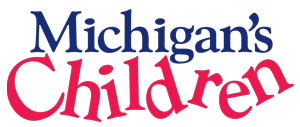A Double Whammy
$492. That’s the maximum monthly Family Independence Program (FIP) benefit for a family of three in Michigan. However, between September of last year and February, more than 46,000 kids lost cash assistance due to Michigan’s new time limit.
$432. That may not sound like a lot to some people, but $432 was the average amount of the Michigan Earned Income Tax Credit (EITC) for low-income families in 2011. Nearly 800,000 households claimed the EITC in 2011, or 19 percent of all households in the state of Michigan.
Furthermore, according to data from the Michigan Department of Treasury in 2011:
- The average federal adjusted gross income (AGI) of a Michigan EITC filer was approximately $17,000;
- Over half of all filers had an AGI of $15,000 or less, meaning that many were making a wage below the poverty level;
- Nearly 7 out of 10 filers claimed at least one child exemption; and
- The average filer claiming 2 children had an MI EITC of $657.
However, due to action taken in 2011, the state EITC was reduced from 20 percent of the federal EITC to just 6 percent. While it is important to keep in mind that the state EITC was saved from total elimination, this decrease in the EITC starting this year will not only hurt Michigan’s economy, but hit children and families of color the hardest, since households of color tend to have lower income than their White counterparts and are more likely to live in poverty. According to Kids Count in Michigan, child poverty for African American kids is fully three times that of White children, and poverty rates for Hispanic children are more than twice the rates for Whites.
As evidenced by data published by the Michigan League for Human Services on their EITC website, the state EITC put over $349 million back into the state’s economy. However, with tax changes in 2011, that figure will drop to an estimated $104 million and the average amount received for each family will drop to approximately $132. This is just 30 percent of what families received in 2011 and effectively a tax increase on low-income families…and for families already struggling to make ends meet, this could prove dire.
Furthermore, according to data from the report, the top five House and Senate districts hardest hit by this change were from areas that are predominately African American communities in Southeast Michigan. However, particularly for the Senate, once you move out of top five districts hardest hit by these changes, the next five areas are places that have high concentrations of people of color in West Michigan, Flint and Saginaw. This means that communities in Southeast Michigan, West Michigan and elsewhere stand to lose millions of dollars that were used to help families and drive the local economy.
Therefore, by cutting the EITC, not only will families have less money to put back into their local economy, but families and children living in low-income families will face even more economic hardship. And with approximately 86,000 EITC filers earning less than $5,000 in 2011, some of whom may have lost, or are threatened with the loss of cash assistance benefits, we are once again hurting those who are already hurting the most, and children in these families will be hardest hit. Not only will families see a reduced EITC amount, but they may also be losing cash assistance each month that is used to cover basic needs such as clothing, housing, and utilities. This double loss of assistance to parents and children may prove detrimental in the long run as children who grow up in poverty are more likely to live in poverty as adults. As Governor Snyder aims to reduce child poverty, eliminating cash assistance benefits for thousands of children and simultaneously reducing the MI EITC is no way to accomplish this goal.
-Jacqui Broughton
